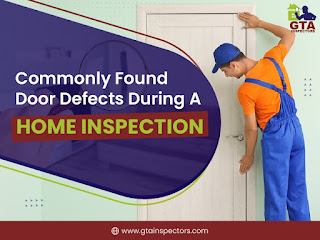Indoor Air Quality Of A House: Causes and testing options
A modern, well-lit home might not be as safe as it appears. Lack in fresh air as well as good ventilation is a frequent issue that home inspectors have observed in contemporary houses. For those who are new to the market and have a keen eye on getting an property inspection including a check of IAQ (IAQ) Indoor Air Quality is an essential element of the inspection.
Poor Air Quality is thought to have health effects like headaches, fatigue dizziness, headaches and irritation of the nose, eyes and throat. If it's more severe than poor, people could be at risk of long-term health issues such as lung cancer, respiratory disease or heart-related ailments. In this article, we'll discuss the best we can in order to present the root of the problem with the low indoor air quality of your home, and the actions needed to address the issue.
Without further delay we will look at the reasons that contribute to inadequate in-home air pollution.
A IAQ (also known as Indoor Air Quality refers to the quality of air in and around the property's premises. When conducting an inspection of the property There is a good chance that inspectors will encounter things such as mould, insects, moisture and radon, among other factors that could impact the air quality of the house. Here are some of the most frequent reasons for low indoor air quality
1.Poor Ventilation Provision:
The people of today have embraced smaller and more comprehensive living using modern designs for buildings and techniques. Homes that are well-insulated and energy efficient are the talk of the moment. But , as we are aware, all coins have two sides. This construction stylealso has an issue of having lower air circulation. So, when a noxious part of the house is brought in it can be difficult to remove it , or be diluted by air circulation.
2.Damage by Humidity:
Moisture on the walls and the surfaces of the house can be the possibility of poor air quality. Thus, properties built in humid conditions are more likely be susceptible to a lower air quality in the home. Owners of these properties should be cautious about the development of mould and mildew, especially in bathrooms, basements the kitchen's sinks and water heaters, and pools.
3.Presence for radioactive gasses:
The quality of the air in the house can be severely affected due to the presence of radioactive gases such as Radon. Radioactive gases emanate by decomposed uranium rocks. They are mostly colorless, tasteless and odourless and are able to enter the air of a location through holes and gaps. It may be harmless when it is in tiny quantities, however the radioactive gasses can put residents to serious health risks when exposed to an area.
4.Biological pollutants:
Biochemical contaminants such as pollen, dust mites, mould, viruses, bacteria mildew, flies from rodents, cockroaches and many more microorganisms are small enough to be inaccessible by the human eye. These pollutants can lead to severe allergic reactions and diseases.
5.VOCs:
When it comes to property snagging one of the main causes of bad air is that of (VOC)Volatile Organic Compounds like wall paints and cleaning products fragrances for the air, hair sprays, crafting materials and a myriad of other materials that are common. In general, VOCs are released by the chemical scent of fresh or new items, such as new curtains, rugs, or wall paints. They may cause health problems likeheadache, dizziness nausea, and headaches.
We've come to the different reasons that could lead the indoor environment to be a mess, it's time for us to get into how these unwelcome circumstances can be identified and identified by a professional inspection.
1.Radioactive gas testing:
Property inspectors are able to conduct tests on air similar to the radon test by using either an active or passive testing instrument and detect trace of radioactive gases, such as the radon. The test involves the taking of air samples, which is sent to laboratories to be analyzed.
2.Carbon test for monoxide:
Property inspectors typically carry a CO detector on their person to provide a clear view the presence of carbon monoxide the air. In addition to this portable device, experts typically employ thermal imaging in their inspection of the property.
3.Bio tests for contaminants:
The application of an XRF machine to detect lead on the surface is yet another method used in the property snagging company .
In short In a nutshell, we at GTA Inspectors recommend that you take a proper Indoor Air Quality Examination while taking care of the structure of your home. The primary reason behind this advice is the direct influence that the quality of air in an area has on the people who live there. Keep your family healthy your family and friends by ensuring that you have a healthy air quality in your home!
.jpg)

.png)
.jpg)
Comments
Post a Comment